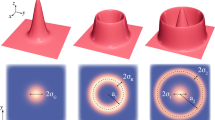Abstract
Advances in laser welding technology, including fiber optic delivery and high power density, are increasing the applicability of this joining technique. The inherent benefits of laser welding include small heat-affected zones, minimal distortion, and limited susceptibility to cracking. These advantages are of special interest to next-generation nuclear power systems where welding solute-rich alloys is expected to increase. Alloy 690 (A690) is an advanced corrosion-resistant structural material used in many replacement components and in construction of new commercial power plants. However, the application of A690 is hindered by its difficult weldability using conventional arc welding, and laser welding is a promising alternate. This work studies the effects of travel speed and beam focus on porosity formation in partial penetration, autogenous A690 laser welds. Porosity has been characterized by light optical microscopy and x-ray computed tomography to quantify its percent volume in the welds. This work describes the tradeoff between weld penetration and defect density as a function of beam defocus and travel speed. Additionally, the role of shield gas in porosity formation is discussed to provide a mitigation strategy for A690 laser welding. A process map is provided that shows the optimal combinations of travel speed and beam defocus to minimize porosity and maximize weld penetration at a laser power of 4 kW.









Similar content being viewed by others
References
M. Pastor, H. Zhao, R.P. Martukanitz, and T. DebRoy, Weld. J. 78, 207S (1999).
Y. Kawahito, M. Mizutani, and S. Katayama, J. Phys. D Appl. Phys. 40, 5854 (2007).
S. Beretta and B. Previtali, Sci. Technol. Weld. Join. 14, 106 (2009).
T.Y. Kuo and S.L. Jeng, J. Phys. D Appl. Phys. 38, 722 (2005).
W.W. Duley, Laser Welding (New York: John Wiley & Sons, Inc, 1992).
ISO 11146-1:2005, Lasers and Laser-related Equipment -- Test Methods for Laser Beam Widths, Divergence Angles and Beam Propagation Ratios (Geneva, Switzerland: International Organization of Standardization, 15 January 2005).
K. Shinozaki, et al., Weld. Res. Abroad 46, 3 (2000).
J.T. Norris, et al., Weld. J. 90, 198-s (2011).
T.Y. Kuo, Sci. Technol. Weld. Join. 10, 557 (2005).
T.Y. Kuo and Y.-D. Lin, Mater. Trans. 48, 219 (2007).
C.D. Penna, Superalloys 2000, ed. K.A. Green, T.M. Pollock, and R.D. Kissinger (Warrendale, PA: TMS, 2000), pp. 821–828.
Acknowledgements
The authors gratefully acknowledge Steven Maynard and Bill Shiner of IPG Photonics Corporation for welding support.
Author information
Authors and Affiliations
Corresponding author
Rights and permissions
About this article
Cite this article
Tucker, J.D., Nolan, T.K., Martin, A.J. et al. Effect of Travel Speed and Beam Focus on Porosity in Alloy 690 Laser Welds. JOM 64, 1409–1417 (2012). https://doi.org/10.1007/s11837-012-0481-3
Published:
Issue Date:
DOI: https://doi.org/10.1007/s11837-012-0481-3




